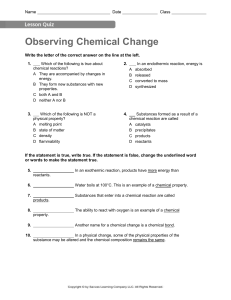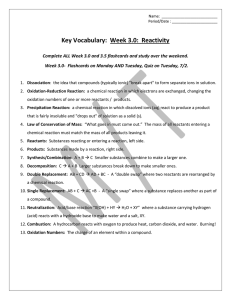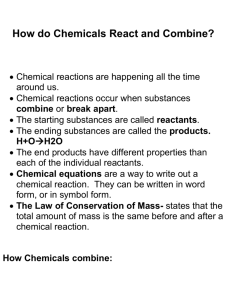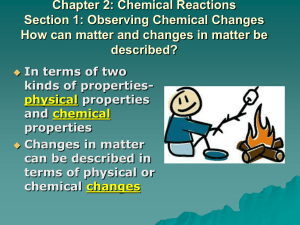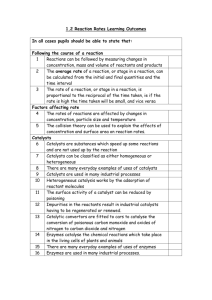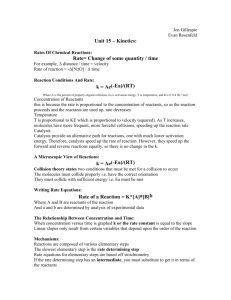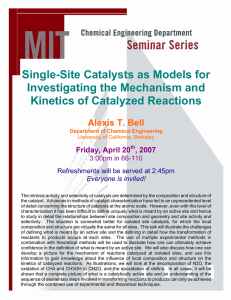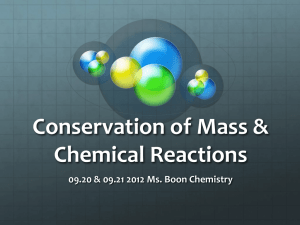Unit B: Matter & Chemical Change C
advertisement
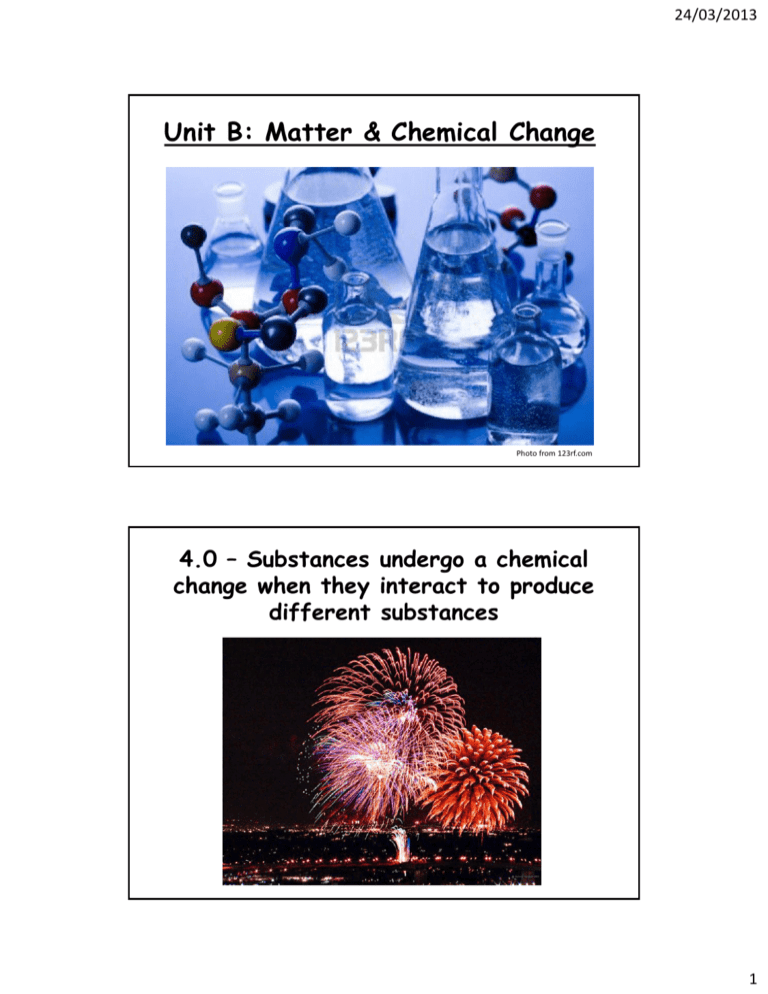
24/03/2013 Unit B: Matter & Chemical Change Photo from 123rf.com 4.0 – Substances undergo a chemical change when they interact to produce different substances C 1 24/03/2013 4.1 – Chemical Reactions A. Introduction 1. 2. 3. 4. 5. 6. A chemical reaction takes place when 2 or more _________________ combine to form a NEW substance (compound). The materials at the START of a reaction are called the _______________. The materials produced AFTER the reaction has taken place are called the _______________. We can use chemical _______________ equations to show a reaction has taken place. The arrow will ____________ point towards the products. Example: _____________________________________________ _____________________________________________ 7. A _______________ change results from a chemical reaction. Evidence that a chemical change has occurred include: a) b) c) d) A change in _______________ The formation of an _______________ The _______________ of a solid or a gas (bubbles) The release or absorption of _______________ B. Endothermic and Exothermic Reactions 1. 2. A chemical change, which releases energy, is called _______________. A chemical change, which absorbs energy, is called _______________. C. Chemical Changes Involving Oxygen 1. Three different chemical reactions that occur when oxygen reacts with other substances are: a) _______________– occurs when oxygen reacts with another substance to form a new substance and give off ENERGY. 2 24/03/2013 b) c) _______________ - occurs when oxygen combines in the air and reacts with a METAL _______________ _______________ - occurs when oxygen undergoes a chemical reaction in the cells in your body 2. The most _______________ word equation to remember is: _____________________________________________ _____________________________________________ Page 162 #’s 1-9 4.2 – Conservation of Mass in Chemical Reactions A. The Law of Conservation of Mass _____________________________________________ _____________________________________________ 2. 3. 4. 5. (E The law ties in well with the atomic theory, which states that atoms are never _______________ or destroyed. In a chemical reaction the atoms and molecules are simply _______________ . This law of conservation of mass however does not apply to nuclear reactions, because there is some loss of mass: ____________________________________________ This was first suggested by Albert Einstein in his famous equation: _______________ is __________, M is _________, C2 is a ______________) 3 24/03/2013 6. 7. A very tiny amount of _______________ is equal to a very large amount of _______________. In an _______________ system, some of the mass seems to _______________ , when it is in the form of a gas. 4.3 – Factors Affecting the Rate of a Chemical Reaction A. Reaction Rate 1. The speed of a chemical reaction is called the _______________ _______________ . a) _______________ of the reactants affects the rate of all reactions (The higher the temperature the faster the reaction rate). b) _______________ _______________ of the reactants affects the reaction rate (The more surface in contact, the faster the reaction rate). c) _______________ of the reactants affects the reaction rate. (The higher the concentration, the faster the reaction rate). d) The presence of a _______________ affects the reaction rate (Catalysts are substances that help a reaction proceed faster). 4 24/03/2013 B. Catalysts 1. 2. Catalysts are not _______________ in the reaction. Types of reactions involving catalysts can be found in _______________ and non-living things. 3. _______________ help in the reactions in the body, which break down food. 4. They also get rid of _______________ in the body. 5. Catalase (an enzyme found in plant and animal cells) speeds up the _______________ down of hydrogen peroxide into harmless oxygen and water. 5
